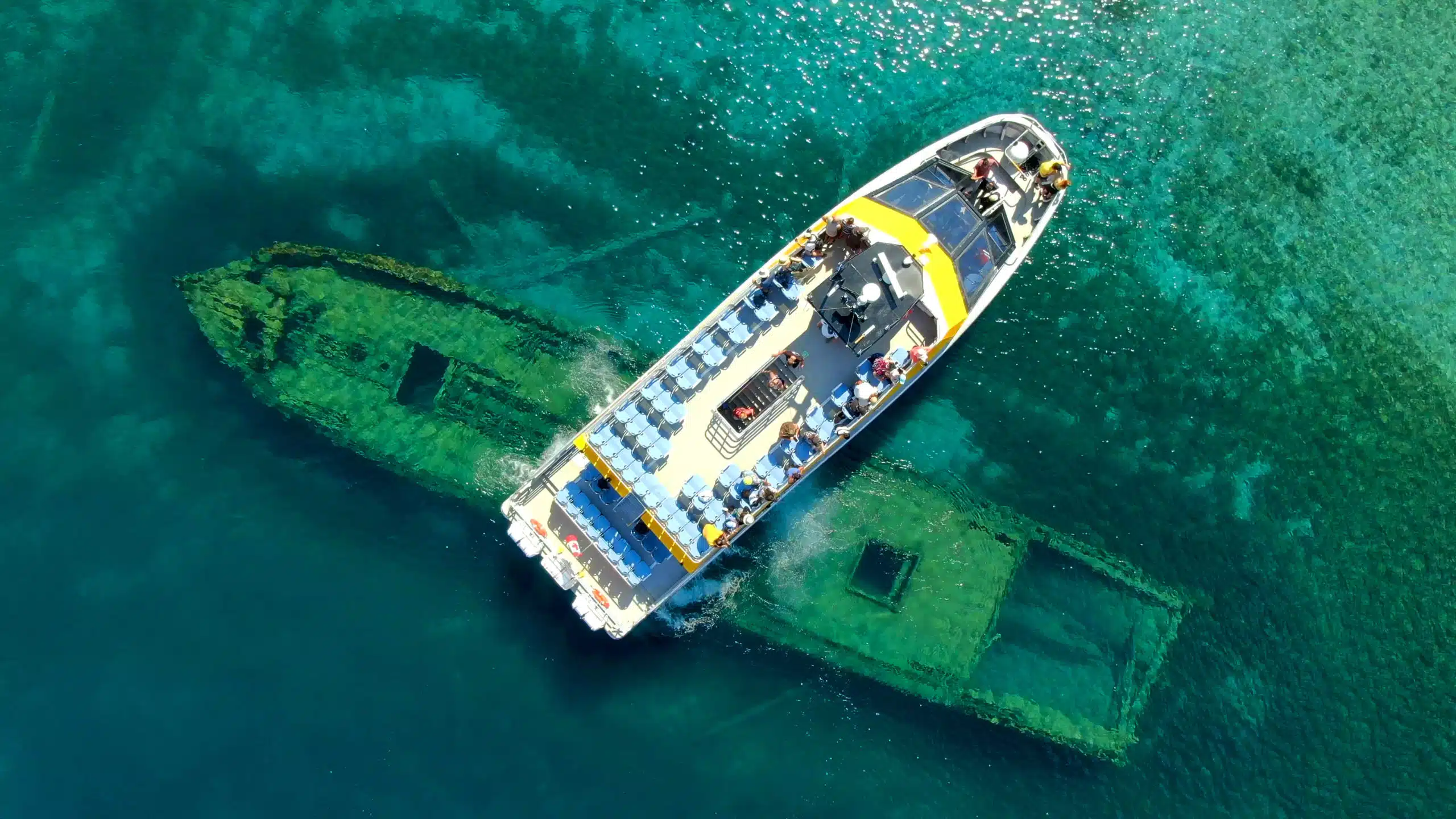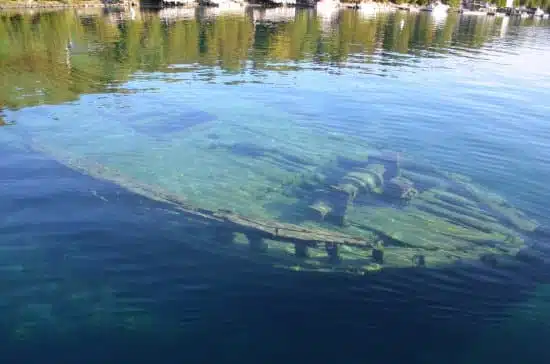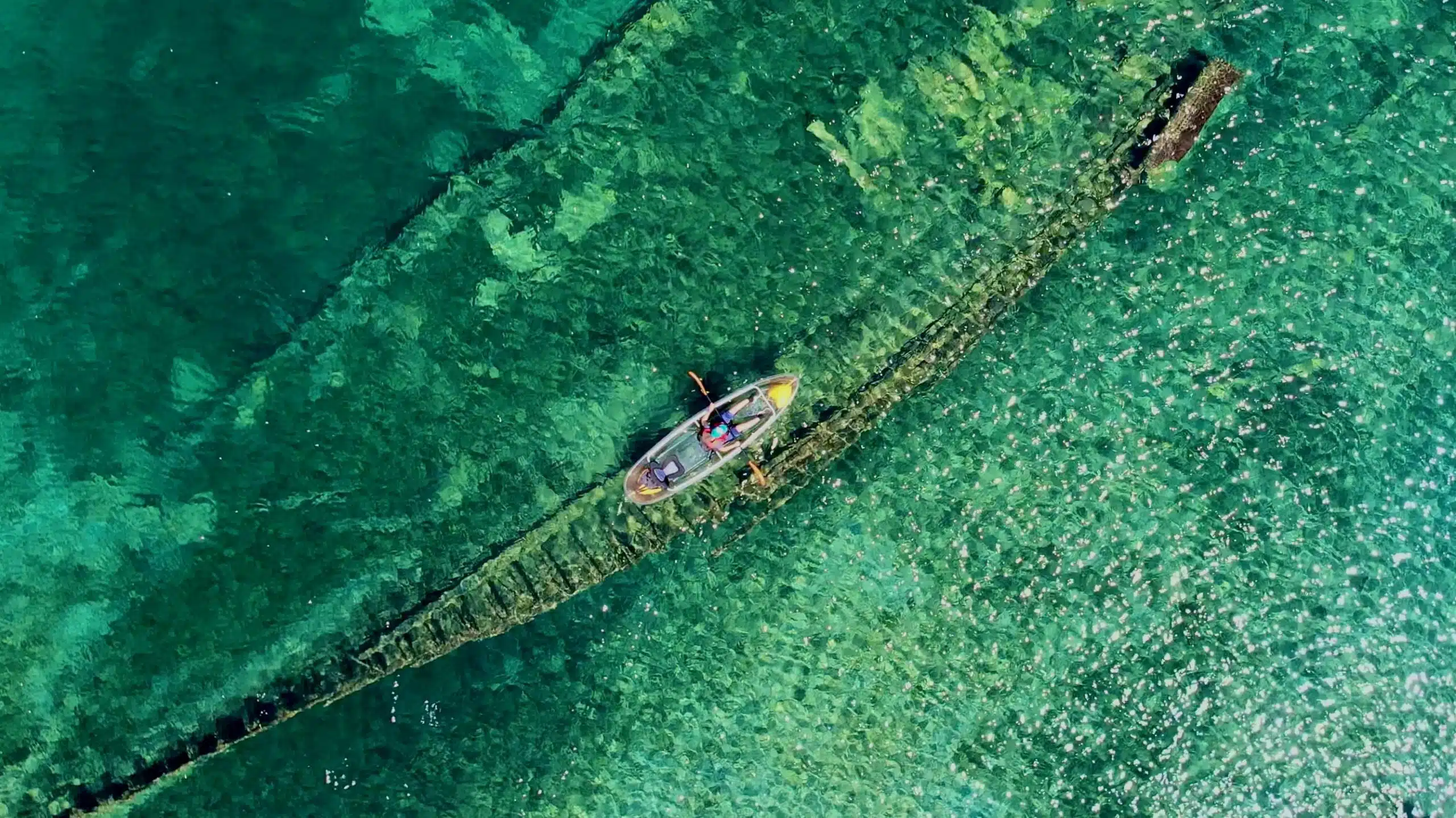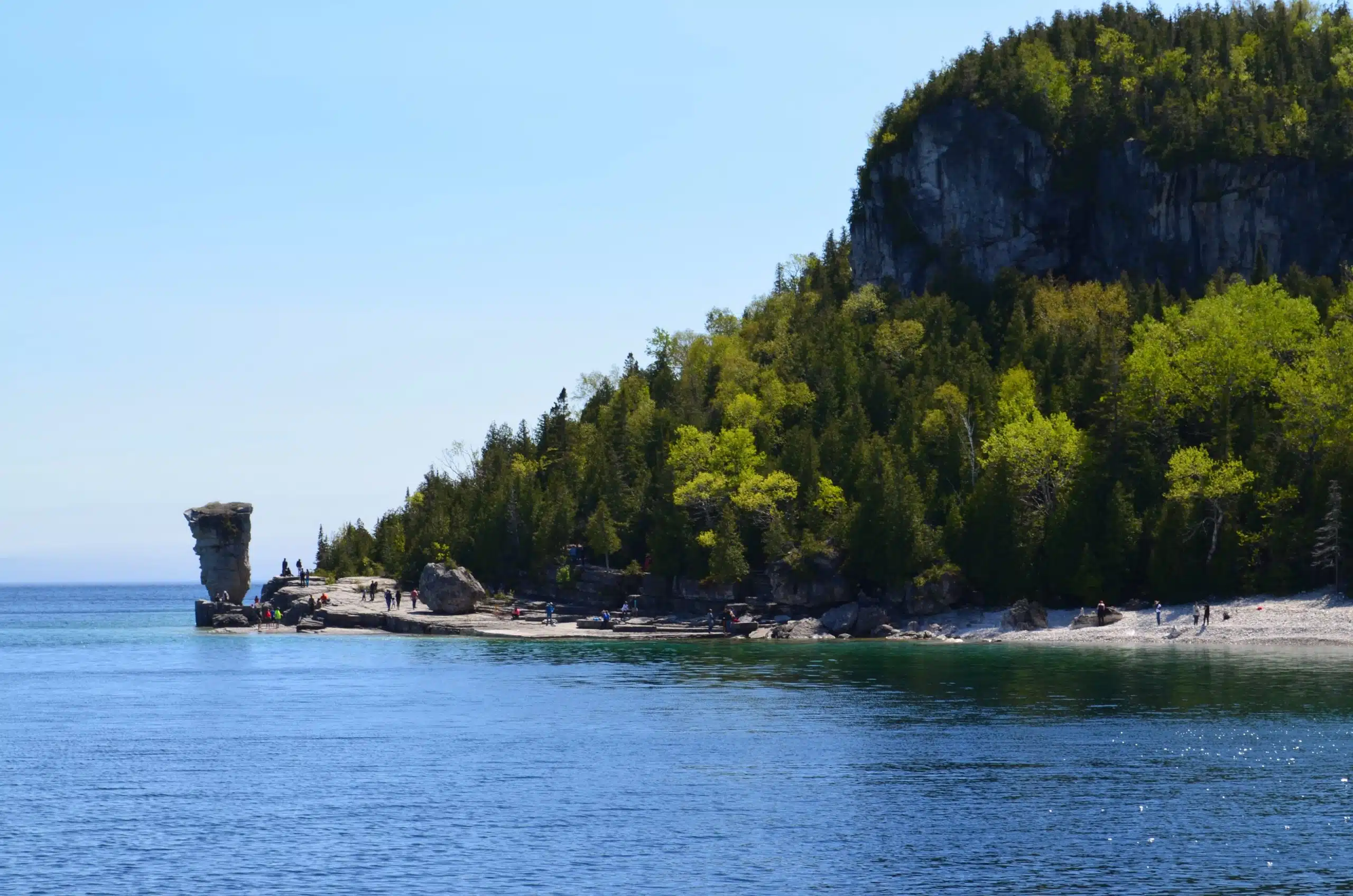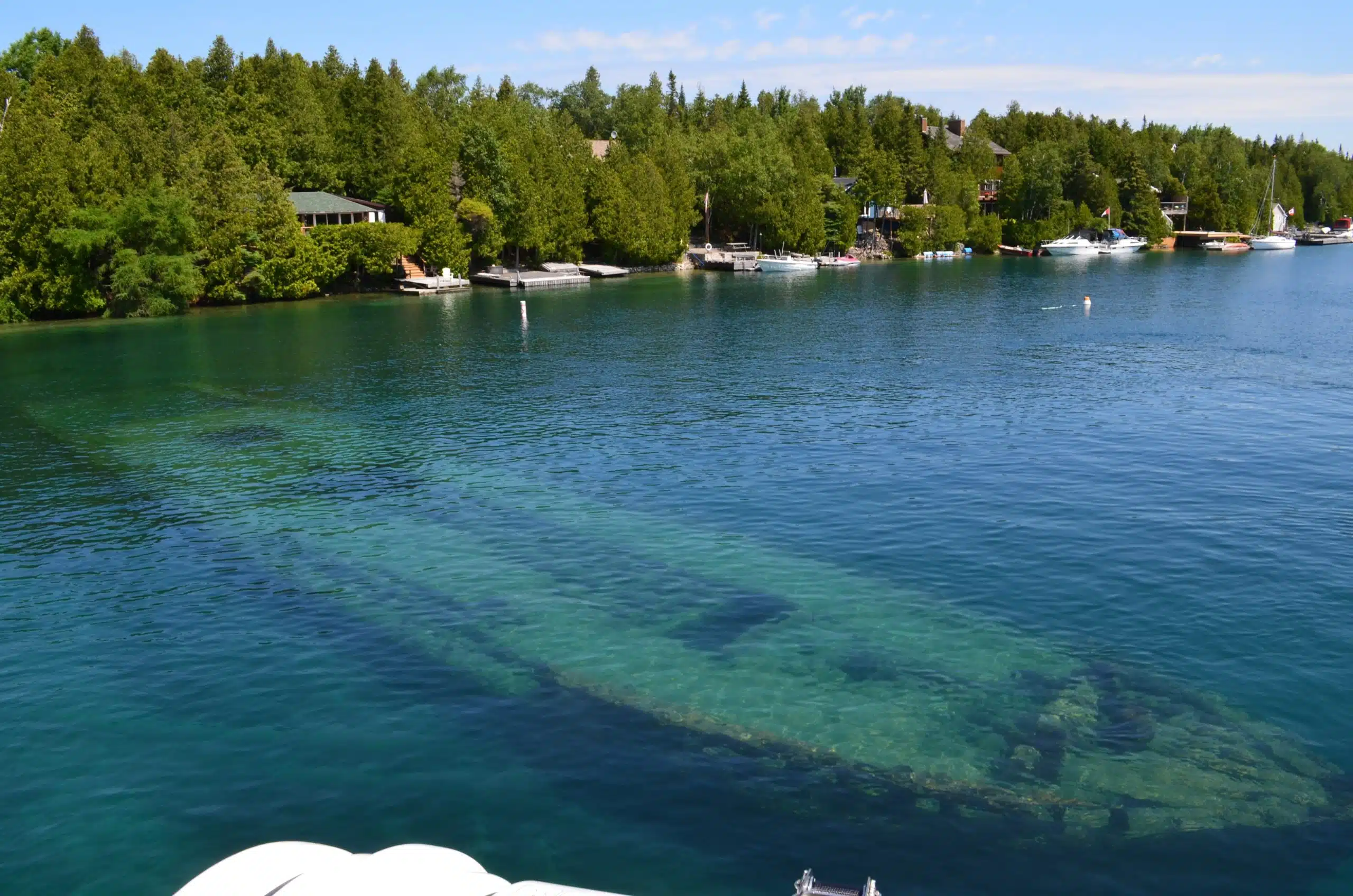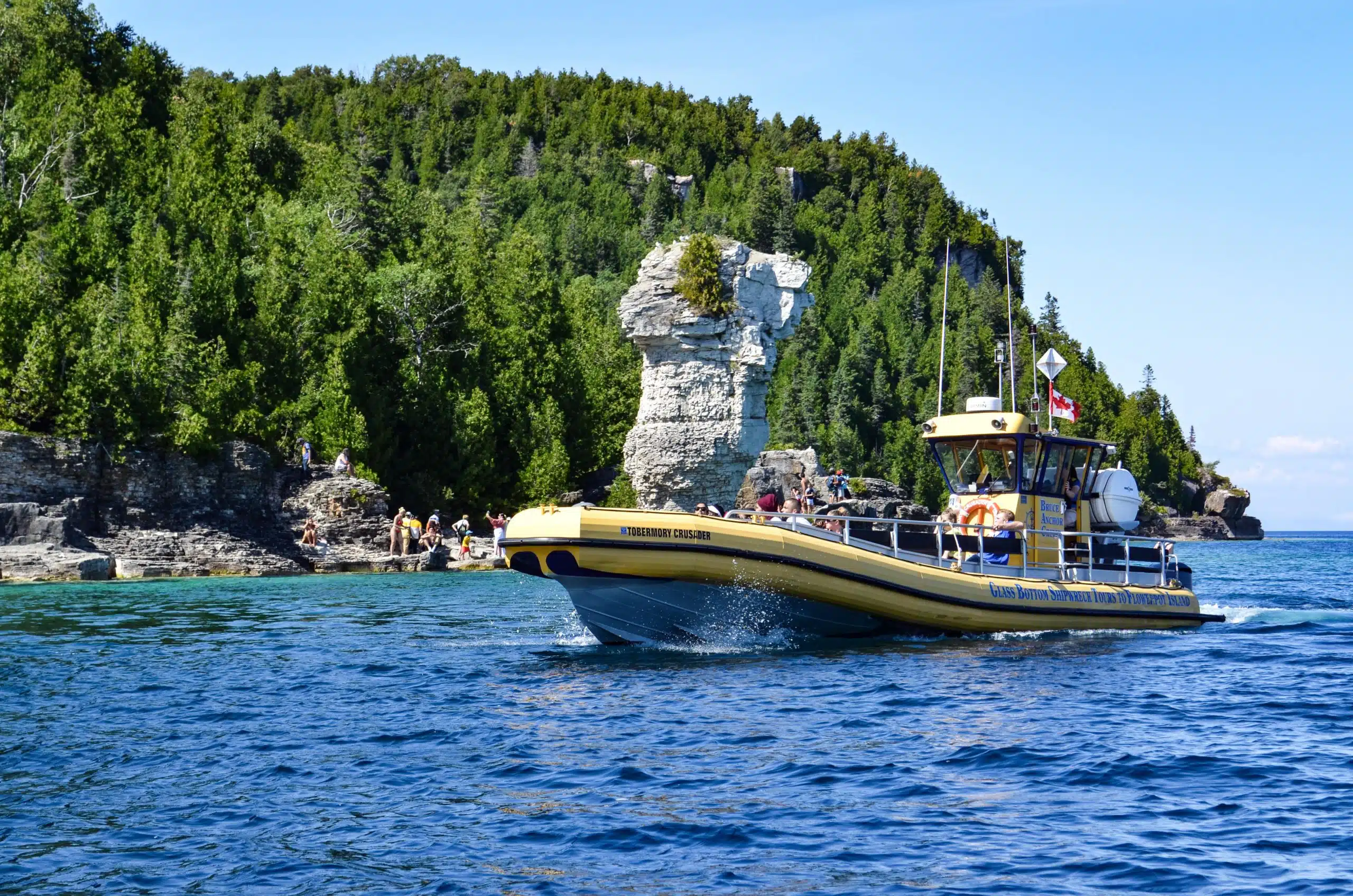Sweepstakes (1867)
History
The Sweepstakes was built in Burlington, Ontario, in 1867 by Melancthon Simpson. The two-masted wooden schooner’s length was 36.3 m (119 ft), and the hull’s maximum depth was 7 m (20 ft). The schooner weighed approximately 218 tonnes. The Sweepstakes was last owned by George Stewart, who lived in Mooretown, Ontario. The schooner gives a good depiction of what a typical Great Lakes schooner looked like.
Damage
Damaged off Cove Island in August 1885, the Sweepstakes was towed to Big Tub Harbour’s head, located in the Fathom Five National Marine Park, by a tugboat named Jessie. The schooner suffered serious damage and was not repaired in time, causing it to sink in September 1885. The Sweepstakes was transporting coal, which was retrieved after the boat sank.
Present Day
Today, the Sweepstakes shipwreck is near picture perfect, as the hull remains mostly intact. Located approximately 50 yards from the head of Big Tub Harbour, it lies at a depth of 20 feet. The bow area of the ship contains the windlass and portions of the starboard railings. The stern name-board has been removed and is currently displayed at the Bruce County Museum in Southampton. The center-board box is in the middle of the schooner, with the centreboard inside. This extends from keel to deck. The aft deck of the Sweepstakes has collapsed, causing the stern post to fall, where it now lies on the bottom of Big Tub Harbour.
